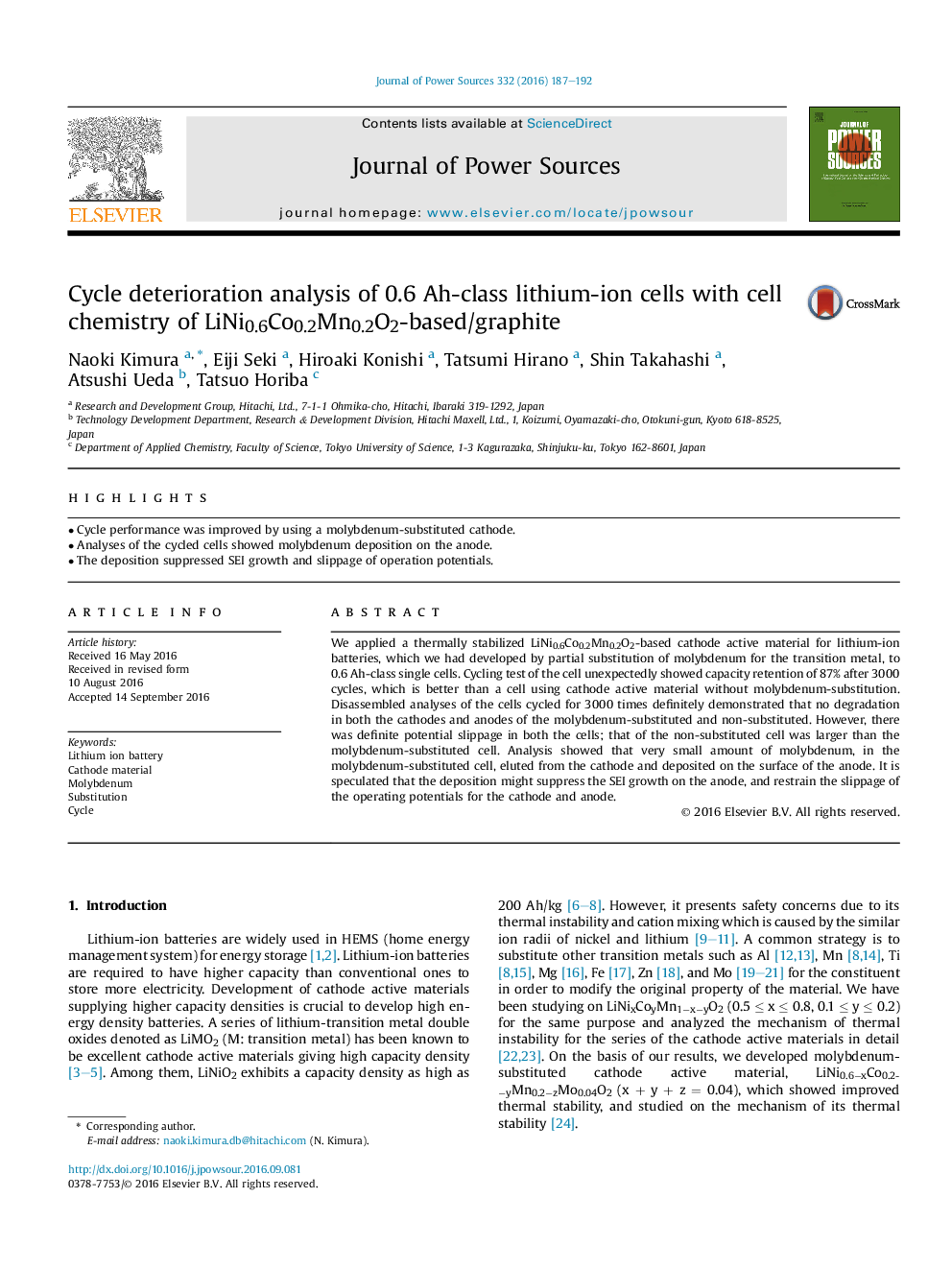| Article ID | Journal | Published Year | Pages | File Type |
|---|---|---|---|---|
| 5150119 | Journal of Power Sources | 2016 | 6 Pages |
Abstract
We applied a thermally stabilized LiNi0.6Co0.2Mn0.2O2-based cathode active material for lithium-ion batteries, which we had developed by partial substitution of molybdenum for the transition metal, to 0.6Â Ah-class single cells. Cycling test of the cell unexpectedly showed capacity retention of 87% after 3000 cycles, which is better than a cell using cathode active material without molybdenum-substitution. Disassembled analyses of the cells cycled for 3000 times definitely demonstrated that no degradation in both the cathodes and anodes of the molybdenum-substituted and non-substituted. However, there was definite potential slippage in both the cells; that of the non-substituted cell was larger than the molybdenum-substituted cell. Analysis showed that very small amount of molybdenum, in the molybdenum-substituted cell, eluted from the cathode and deposited on the surface of the anode. It is speculated that the deposition might suppress the SEI growth on the anode, and restrain the slippage of the operating potentials for the cathode and anode.
Related Topics
Physical Sciences and Engineering
Chemistry
Electrochemistry
Authors
Naoki Kimura, Eiji Seki, Hiroaki Konishi, Tatsumi Hirano, Shin Takahashi, Atsushi Ueda, Tatsuo Horiba,
